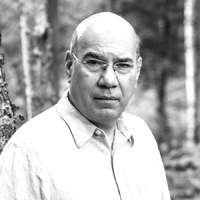Who was Jesus anyway? After twenty centuries, there is not much anyone can agree on. The four canonical gospels don’t measure up to modern standards of biographical writing, and—outside of this material—there is precious little contemporary evidence, apart from a few glancing mentions of Jesus or the movement centered on him. In truth, Jesus did not, in his own time, attract much notice.

This presents biographers with a problem. What can you base his reality on, unless you take it on faith?
The work of recent Christian scholars comes in every size and shape, with few common assumptions. Jesus may variously be regarded as a wandering magician or a Mediterranean peasant, a radical revolutionary (a Zealot) or a mystic or a radical Jew or, indeed, the long-awaited Messiah. Arguments can be mustered from the evidence to support all kinds of theories about his identity and true nature.
Plenty of fairly literal-minded Christians believe simply in the gospel truth. But even among these groups, there are severe differences. Some fundamentalist groups see him as a kind of avenging angel, ready to hurl into the flames of hell those who refuse to “believe.” Countless milder versions of this Jesus exist, including the Lamb of God who takes away the sins of the world, the Son of Man who, like that shining figure in the Hebrew Book of Daniel, stands before God in our place. As ever, it depends on which verses in the Bible you happen to quote, building a theology on those select references, ignoring any verses that contradict your vision.
One of the great theologians of the twentieth century, Rudolf Bultmann, famously said in 1935: “I do indeed think that we can know almost nothing concerning the life and personality of Jesus.” He understood that the gospels were hardly straightforward biographical accounts but quasi-mythical tales that reflected views of Jesus put forward by various Christian communities in the decades after his death. The gospels were, in fact, written anywhere from forty to a hundred years after Jesus, and their authors attempted to demonstrate that Jesus could be seen to fulfill various Old Testament pronouncements. Hardly a verse goes by in Matthew, Mark, Luke, or John without some effort to connect whatever Jesus says or does with something in the Hebrew scriptures. Even his famous last words on the cross—“My God, my God, why hast though forsaken me?”—are a quotation from Psalm 22.
Yet a lot has changed since Bultmann made that dire pronouncement. A lot of archaeological work has been done in the Middle East, and we have much clearer ideas about what ancient Palestine looked liked. Research into Second Temple Judaism—that magical period between the destruction of the first and second temples—has yielded a good deal of information about the sects that flourished at this time, such as the Essenes, a devoutly mystical community who lived in caves along the Dead Sea (and elsewhere). Their writings, the Dead Sea Scrolls, were discovered after the war: a rich trove of sacred literature. We also have the Gnostic Gospels, discovered in 1947 and adding a wealth of insights into early Christian thinking. There has, in short, been a renaissance in Jesus scholarship in the last half century.
And yet, we still can’t say that much about Jesus, as a man. We don’t know much about his first thirty years, even where or how he was educated—though we can assume he knew a lot, as his sermons (and parables—considered his most authentic words) seem richly allusive, intelligent, and aware of religious currents.
In my view, he was a kind of religious genius born in a fertile place and time: on the Silk Road, when Hellenistic ideas about body and soul had begun to take root in the Middle East, and when the winds of eastern mysticism—with the idea of karma, for instance—blew in from Persia and farther afield. Jesus grasped these concepts, and weaved them into his teaching, overturning traditional Jewish assumptions though building on some of them as well. The Sermon on the Mount offers a unique blend of western and eastern thought, summarizing his ideas. Here he puts forward his radical notions about nonviolent resistance to evil. In the gospels, he spoke in challenging aphorisms and parables. As he walked and taught in Galilee, he modeled behavior that shocked those in who met him.
By his death and crucifixion, he modeled suffering and death as well as life. He understood that his life was symbolic, even mythical. And by his resurrection—which was not the Great Resuscitation but a kind of magical transformation into a new form of life, eternal life, he offered humanity hope. (Interestingly, mainstream Jews of the day—the Sadducees—did not believe in any kind of resurrection.)
In writing about Jesus, as in my new biography I like to use the word mythos, the Greek word for a story with symbolic contours. This story has both literal heft and poetic levels of association.
So who is Jesus? For me, he’s the central character in the greatest story ever told. It’s a story about a gradually realizing kingdom that lies inside of us. He encouraged us to enter the wider mind of God through attachment to his teaching and example, but he left only one commandment: “Love one another as I have loved you.” It’s quite simple, this message, but it’s enough.






